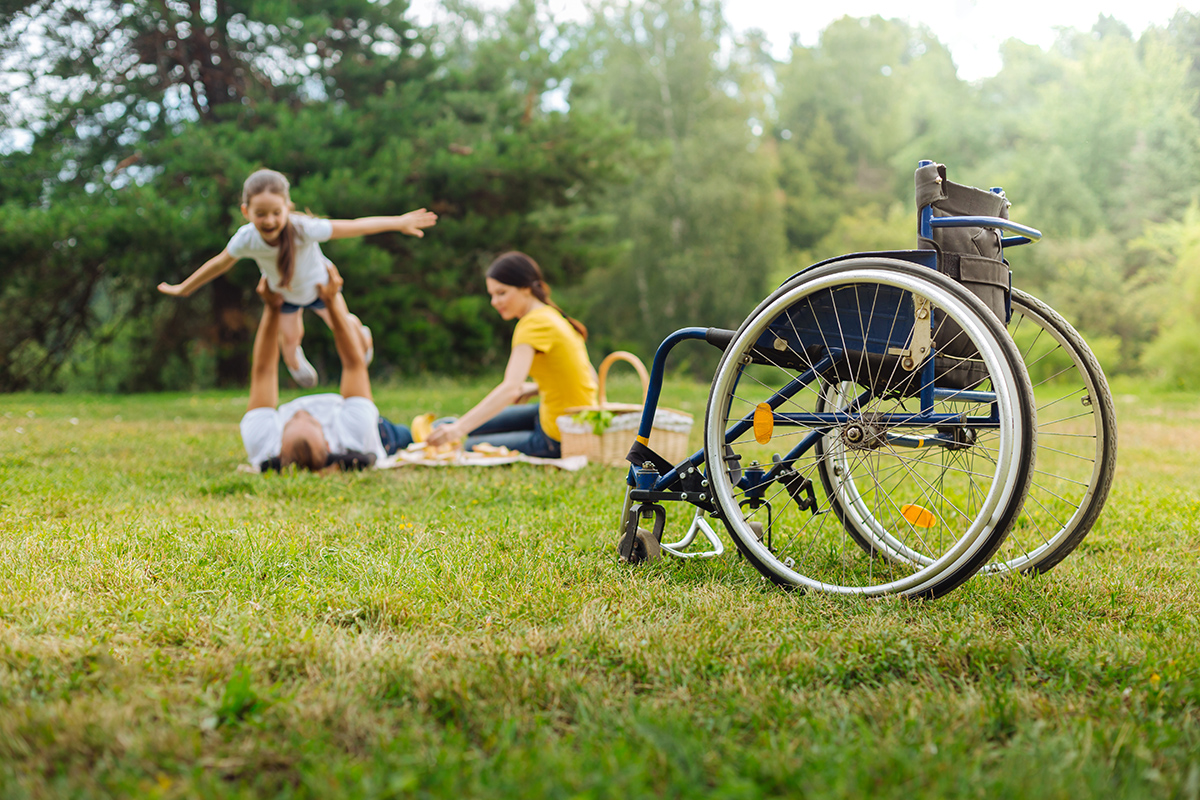Alternating Hemiplegia of Childhood is considered a medically complex disorder. Along with the challenges of AHC, patients are also diagnosed with additional conditions that may result in an increase in physical and functional disabilities requiring a multidisciplinary approach. The medical term is ‘comorbidity’ and describes cases in which a ‘distinct additional clinical entity’ occurs along with the original or primary diagnosis. AHC is a condition that is comorbid with several others, including but not limited to the following:
Epilepsy
Approximately 50% of alternating hemiplegia of childhood patients also have epilepsy, which is either focal or generalized. Seizures are often drug resistant. Motor symptoms in epilepsy may include clonic, atonic, or tonic. Non-motor symptoms may include absence (staring spells) or myoclonus (brief twitches). Seizures may have an unknown onset which is when the beginning of a seizure is not known, it’s now called an unknown onset seizure. A seizure could also be called an unknown onset if it’s not witnessed or seen by anyone, for example when seizures happen at night or in a person who lives alone.
Status Epilepticus
Epilepsy can evolve into electrical status epilepticus in sleep with generalized discharges. Changes can coincide with developmental regression consistent with epileptic encephalopathy. MRI and MR spectroscopy studies have shown new cortical atrophy and markedly depressed N-acetyl aspartate peaks compared to previous normal studies. Electrical status epilepticus in sleep can resolve after medication adjustments.
The types of seizure may include:
• Focal Onset – The term focal is used instead of partial to be more accurate when talking about where seizures begin. Focal seizures can start in one area or group of cells in one side of the brain
• Focal Onset Aware Seizures – When a person is awake and aware during a seizure, it’s called a focal aware seizure. This used to be called a simple partial seizure
• Focal Onset Impaired Awareness – When a person is confused or their awareness is affected in some way during a focal seizure, it’s called a focal impaired awareness seizure. This used to be called a complex partial seizure.
• Generalized Onset – These seizures affect both sides of the brain or groups of cells on both sides of the brain at the same time.
Dystonia
In 2020, a European study assessed nonparoxysmal movement disorders in ATP1A3 mutation-positive patients with alternating hemiplegia of childhood (AHC). Approximately 60% of patients were diagnosed with dystonia (nonparoxysmal). The degree of movement disorder was moderate to severe in 43% of patients. At inclusion, dystonic patients were older than nondystonic patients. Moreover, patients with dystonia or chorea, or both, had earlier disease onset and more severe neurologic impairment, but this did not correlate with genotype. Patients with dystonia or chorea (n = 18) had more pronounced hypotonia.
Neuropsychological Impairments
Patients with AHC have developmental difficulties related to impairments in multiple neuropsychological domains. Proper care of patients with AHC requires attention to all aspects of the disorder including neuropsychological aspects.
Identified neuropsychiatric impairments include:
- Attention-deficit/hyperactivity disorder (ADHD)
- Cognition
- Expressive and Receptive Language
- Executive Function/Attention
- Disruptive Mood Dysregulation Behavior
- Disruptive Behavior
- Aggression
- Anxiety Disorder
- Hyperarousal Symptoms
- Obsessive-Compulsive Behavior
- Depressive Disorder
Behavior
Patients with alternating hemiplegia of childhood (41%) often experience severe or extreme behavioral problems and, rarely, medication-triggered psychotic symptoms. Neuropsychological test results were as compared to population norm means. (c) Significant impairments found in Child Behavior Checklist (CBCL), are social, anxiety, sleep issues, and aggression.
Social Impairments
Most patients with alternating hemiplegia of childhood (AHC) have impaired social skills involving multiple domains. These impairments are significant compared to population means. Most patients with AHC have high Social Responsiveness Scale, Second Edition (SRS-2) scores. Patients with AHC with high SRS-2 scores are likely to have autism spectrum disorder. Most High SRS-2 scores in patients with AHC support referral to Autism Spectrum Disorder (ASD) evaluation. The findings are consistent with current understandings of the pathophysiology of AHC and ASD, both thought to involve GABAergic dysfunction.
Sleep Disorders
Sleep-disorder breathing and insomnia are frequent problems in children with AHC. Due to the effects of sleep apnea on learning, attention, behavior, seizure control, and various other health measures, providers should be vigilant to screen for and detect sleep-disordered breathing in patients with AHC. The potential mechanisms for sleep disorders in AHC could also be, at least in part, related to the underlying genetic and neurophysiological abnormalities related to sodium-potassium adenosine triphosphatase (ATPase) dysfunction and not necessarily only due to the aforementioned comorbidities. Nocturnal PSG and clinical sleep assessments should be strongly considered as a routine part of care for these patients.
Attention deficit/hyperactivity disorder
Patients with AHC have developmental difficulties related to impairments in multiple neuropsychological domains. This supports the hypothesis that the underlying AHC pathophysiology involves diffuse neuronal dysfunction. Testing generated recommendations to help manage these difficulties. Patients with AHC also have a range of neuropsychiatric diagnoses, the most common being ADHD which responds to pharmacotherapy.
Alternating hemiplegia of childhood: the gap between paroxysmal manifestations and non-paroxysmal characteristics.
Motor, cognitive, adaptive, and learning impairment
A 2020 study found gross motor impairment in AHC subjects, in agreement with the reports from other authors, who observed delayed development in most individuals with AHC. The results of the present study mostly indicate impaired control of the muscles producing plantar and dorsal flexion of the foot, stabilizing muscles of the foot, as well as muscles straightening the knee and hip joints, which are active during hopping, walking, and running. Additionally, the test results suggest impaired coordination and fluidity of movement, with a narrow base of support. Tests performed in a lying position did not reveal any dysfunction of trunk muscles. However, significantly impaired function of the upper limbs was observed during catching and throwing. Such a pattern of muscle function abnormalities is consistent with disturbances in consecutive phases of development and indicates generally delayed development.
Ataxia
Ataxia describes poor muscle control that causes clumsy voluntary movements. It may cause difficulty with walking and balance, hand coordination, speech and swallowing, and eye movements.
Ataxia usually results from damage to the part of the brain that controls muscle coordination (cerebellum) or its connections. Many conditions can cause ataxia, including genetic disorders like AHC.
Symptoms
Ataxia can develop over time or come on suddenly. Ataxia is a sign of several neurological disorders and can cause:
- Poor coordination
- Walking unsteadily or with the feet set wide apart
- Poor balance
- Difficulty with fine motor tasks, such as eating, writing or buttoning a shirt
- Change in speech
- Involuntary back-and-forth eye movements (nystagmus)
- Difficulty swallowing
- Lose muscle coordination in a hand, arm, or leg
Different gene mutations cause different types of ataxia, most of which are progressive. Each type causes poor coordination, but each has specific signs and symptoms.
Migraine
It is a sign that is not commonly reported in patients with AHC or in family history. Migraine in family history was found in 2 out of 22 (9.1%) and in 3 cases as a prodrome of the attacks in the patients reported by Sakuragawa. A family history of migraine in immediate family members was reported by Mikati et al. in 25% of the patients. A single case of migraine out of 10 was reported by Saito et al. in a boy of 15 years old.
Movement Disorder
The term “movement disorder” refers to several neurological conditions that cause altered coordination of movements. While many movement disorders result in an increase in involuntary movements like tremors or spasms, some disorders may also cause stiffness, rigidity, imbalance, and decreased or slow voluntary movements. These degenerative neurological disorders cause difficulty with balance, movement, coordination, and swallowing. They usually develop due to damage in parts of the brain that control movement (the cerebellum)





